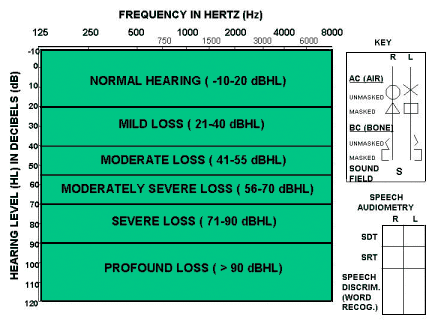What is an audiogram?
One of the most common ways to assess your child's hearing ability is through an audiogram, which is basically a picture of your child's hearing. The horizontal line demonstrates frequency and pitch; the vertical line captures loudness and intensity. Overall, an audiogram charts the weakest intensity of sound heard by your child. Usually, the human ear can detect frequencies from 20 to 20,000 Hz (cycles per second). The results of audiometric tests diagnose hearing loss or diseases of the ear. This is a very common procedure. Our team will help you interpret and understand your child's chart.

Electronic audiogram
Audiologists within Boston Children's Center for Communication Enhancement (CCE) have completed a universal switchover to all-electronic evaluation and reportage. Thanks to tablet PCs that connect directly into audiometers and convert handwritten notes into text, audiograms and reports may be uploaded immediately. If desired, a paper copy may be printed out for patient families immediately following an evaluation. The process will streamline the addition of information into patient records, reduce errors in transcription, and decrease the chances of misinterpretation of data and reports between clinicians. Boston Children’s audiologists conduct about 10,000 audiograms per year.
Audiogram | Programs & Services
Departments
Otolaryngology and Communication Enhancement
Department
The Department of Otolaryngology and Communication Enhancement provides care for a wide variety of congenital and acquired conditions of the head and neck, ranging from airway obstruction and thyroglossal duct cysts to chronic ear and sinus infections.
Learn more about Otolaryngology and Communication Enhancement


